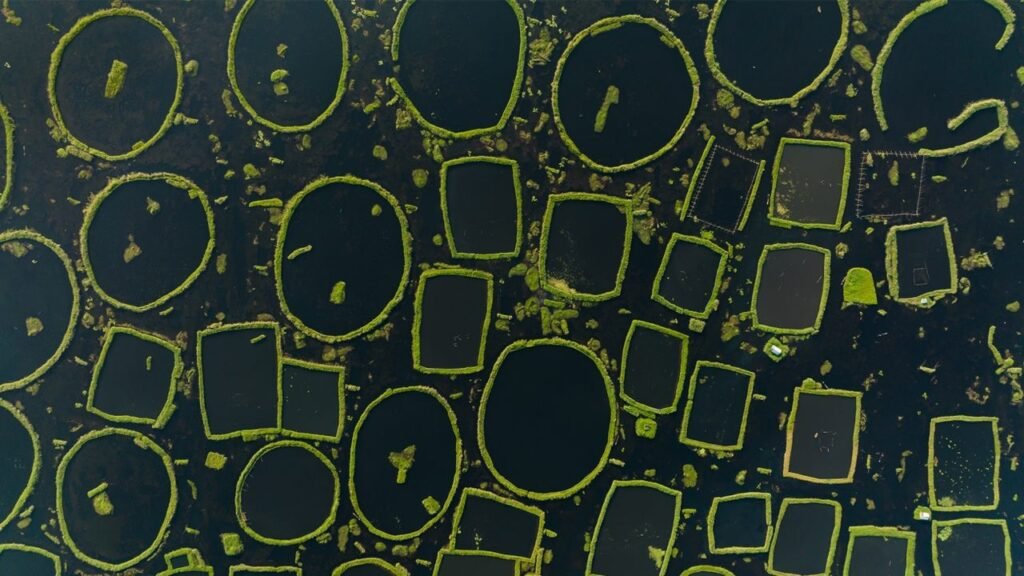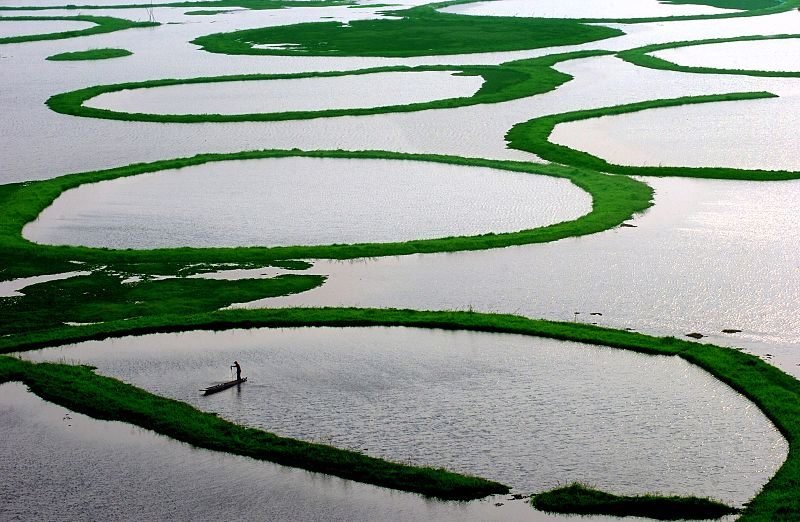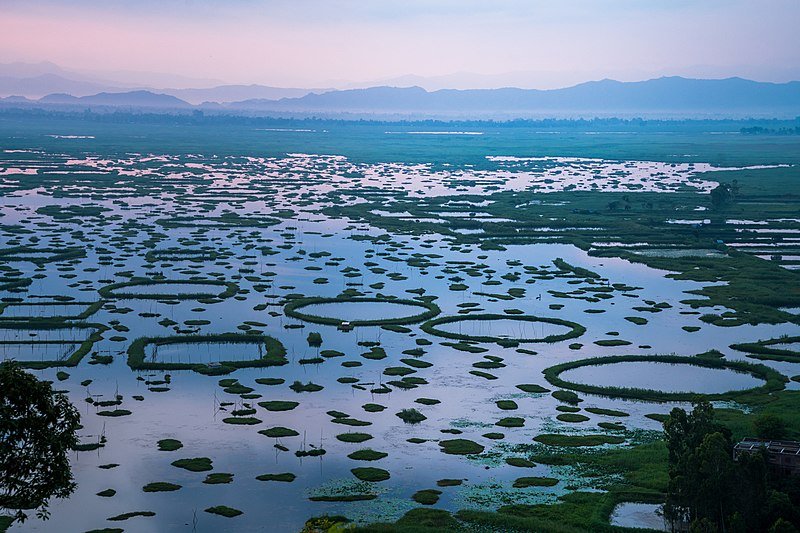The famed floating islands of Loktak Lake in northeast India, which are not far from the Myanmar border, is one of South Asia’s biggest lakes. It is around 100 square miles in size, although this was not always the case. Loktak’s dimensions used to shift considerably with the seasons until the construction of a massive dam boosted the lake’s water levels permanently: during the dry months, it dropped to approximately half its current size.

While this may seem inconvenient for the tens of thousands of people who rely on the lake for water, fish, and other supplies, the changing levels were critical in conserving an uncommon ecology.
Those stunning floating islands, known as phumdis, are really the tops of much thicker mats of dirt and flora. Although phumdis can occur naturally, many of them have been fashioned by people where organic material might accumulate over time, eventually forming a new living island. Thousands of phumdis now float on the lake all year, which is a problem.
When lake levels dropped during the dry season before the dam, roots on the undersides of the phumdis would come into touch with the lake bottom and absorb vital nutrients. Many of the phumdis have begun to disintegrate as a result of the lack of seasonal nutrition.

This is only one of the issues raised by the dam and other infrastructure developments in the area. The Pulitzer Center revealed in 2017 that several native fish species vanished from the lake when the dam was completed in the 1980s.
According to international wetlands watchdog Ramsar, the government responded by stocking the lake with non-native species, notably ravenous silver carp, severely disrupting the environment.
Human activities around Loktak Lake such as agricultural runoff, pesticide usage, and other human activities have only exacerbated the situation. Harvests of locally cultivated rice types and other food resources, such as the extremely nutritious heikak, or water chestnut, have decreased or vanished.

There has been a grassroots push in the last decade to get the dam demolished and the lake’s natural cycle restored, although it would be an unprecedented—and unlikely—event. The dam’s hydroelectricity is the primary source of power for the whole state of Manipur, which has a population of more than three million people and is still growing.
While the destiny of the floating islands and the approximately 100,000 people who rely on the lake is unknown, Loktak remains a location of unearthly beauty for the time being.
Reference- National Geographic, Nature, Pulitzer Center Report, Ramsar Report, Atlas Obscura Story






